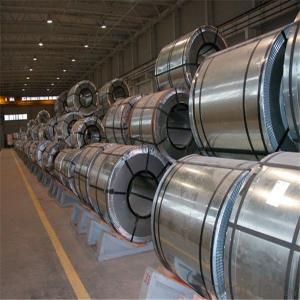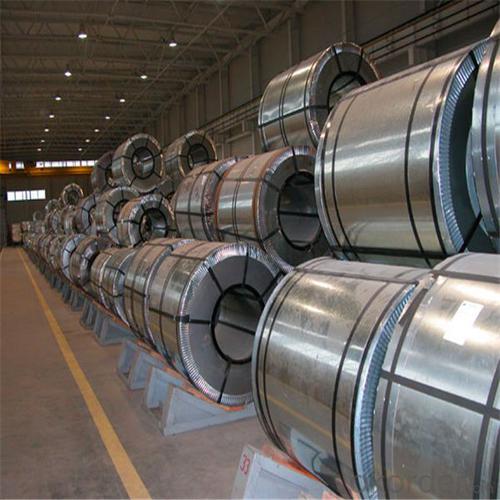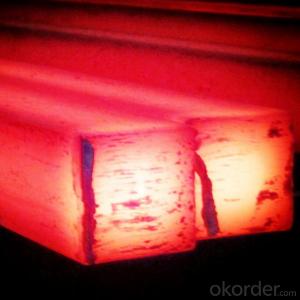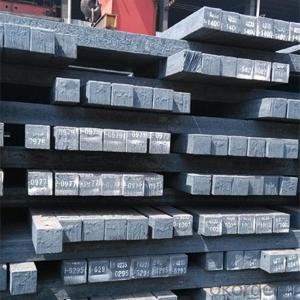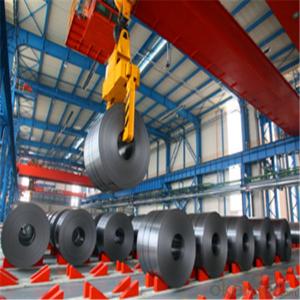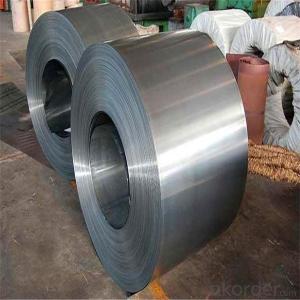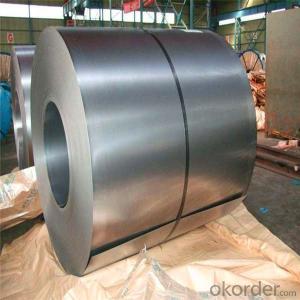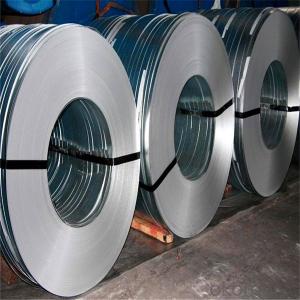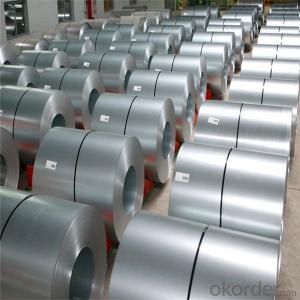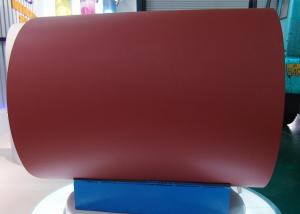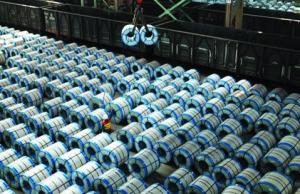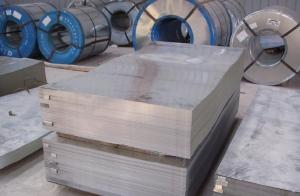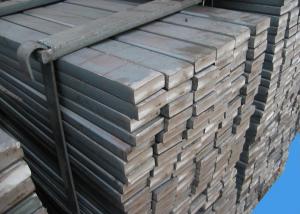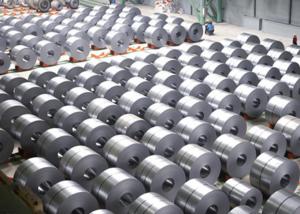Prime Quality SPCD Cold Rolled Steel Sheet/Coil Made in China
- Loading Port:
- China main port
- Payment Terms:
- TT OR LC
- Min Order Qty:
- 20 m.t.
- Supply Capability:
- 50000 m.t./month
OKorder Service Pledge
OKorder Financial Service
You Might Also Like
Specification
Prime Quality SPCC Cold Rolled Steel Sheet/coil
Usage: Widely used to appliance,automobile industry or other decoration usage.
Certificate: ISO9001
Packing Details: Wrapped by water proof paper and plastic film.Covered with iron sheet,strapped by steel strips to protect the damage under transportation.
Details please check following format
Brief Introduction
Cold rolled steel coil is steel that has been worked below its recrystallization temperature by passing it between a pair of rollers. Recrystallization temperature is the temperature at which grains in the lattice structure of the metal have been rearranged, leaving it free of strain and deformations. Cold rolled steel coil is pre-treated before being cold rolled with a process known as pickling, which uses strong acids to remove scale and other impurities. The cold rolled steel coil is then passed through rollers to reduce its thickness. Most cold rolling takes place in multiple passes and as the size of the cold rolled steel coil is further reduced, its strength and hardness both increase, but its ductility decreases. After cold rolling, heating the metal up in a process known as annealing can restore some of its ductility. The final cold rolled steel coil may be manufactured in the form of sheets, strips, bars, or other forms.
Products Picture:

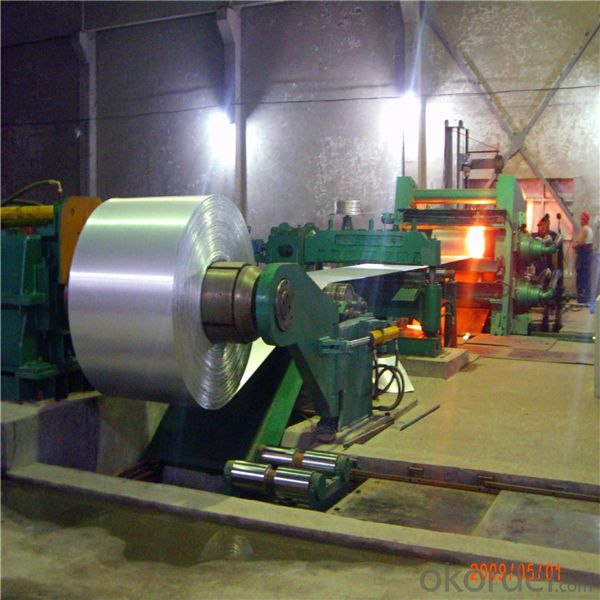

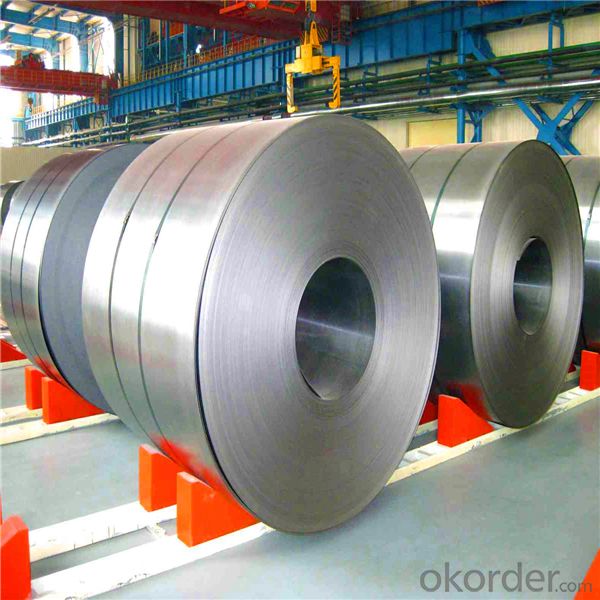
1)Size: Thickness 0.4mm to 3.0mm, width 914mm to 1500mm.
2)Length: Any size or in coil
3)Material grade: SPCC, SPCC-SD
4)Standard: GB / JIS / DIN
5)Package: Waterproof paper with steel pallet.
6)Delivery time: Within 15days.
7)Passed ISO9001 CERTIFICATE
FAQ
1. Q: Where is your company located? How can I visit there?
A: Our company is located in Beijing, China. Welcome to visit us.
2. Q: Can I get sample and how long will it take?
A:Yes. We can supply sample. And you need to pay for courier.
3. Q: What's the MOQ?
A: Our MOQ is 25mt.
4. Q: What's the delivery time?
A: It will take about 30 days after TT or L/C.
5. Q: What is the payment terms?
A: T/T, L/C at sight
6. Q: How does your factory carry out quality control?
A: We attach great importance to quality control.Every part of our products has its own QC.
7. Q: What certificate do you have?
A: We have SGS, ISO9001 etc.
- Q: How are steel wires used in various industries?
- Steel wires are used in various industries for a multitude of purposes such as reinforcing concrete structures, manufacturing machinery and equipment, constructing fences and barriers, supporting suspension bridges, and creating electrical cables.
- Q: What are the different types of steel chains and their applications?
- There are several types of steel chains, including roller chains, leaf chains, conveyor chains, and welded steel chains. Roller chains are commonly used in power transmission, such as in bicycles and industrial machinery. Leaf chains are used for lifting applications, such as hoists and forklifts. Conveyor chains are designed for material handling and are used in industries like mining and agriculture. Welded steel chains are used in heavy-duty applications, such as towing and construction equipment. Each type of chain has specific features that make it suitable for its intended application.
- Q: How is steel used in the manufacturing of mining equipment?
- Steel is commonly used in the manufacturing of mining equipment due to its exceptional strength and durability. It is used to construct various components such as drill bits, shovels, extraction machinery, and crushing equipment. Additionally, steel is preferred for its resistance to wear and corrosion, making it ideal for withstanding the harsh conditions often encountered in mining operations.
- Q: What are the different methods of joining steel components together?
- There are several methods of joining steel components together. Some common methods include welding, bolting, riveting, adhesive bonding, and soldering. Welding involves melting and fusing the steel components together using heat, while bolting involves using bolts and nuts to secure the components. Riveting involves using rivets to join the components by deforming and clinching them. Adhesive bonding uses specialized adhesives to bond the components together, while soldering involves melting a filler metal to join the components. Each method has its advantages and limitations, depending on factors such as the application, strength requirements, and ease of disassembly.
- Q: How are steel products used in the oil and gas industry?
- Steel products are extensively used in the oil and gas industry due to their durability and strength. They are used in the construction of pipelines, storage tanks, drilling equipment, and offshore platforms. Steel is also used for casing and tubing in oil wells, providing structural support and maintaining the integrity of the wellbore. Additionally, steel products are utilized in the manufacturing of valves, fittings, and various components in the oil and gas infrastructure.
- Q: How is steel used in the production of storage tanks?
- Steel is commonly used in the production of storage tanks due to its strength, durability, and corrosion-resistant properties. It provides a sturdy and reliable structure for storing various liquids and gases, including petroleum, chemicals, and water. Additionally, steel tanks can be easily customized and fabricated to meet specific storage requirements, making it a preferred choice in the industry.
- Q: How is steel used in the construction of wastewater treatment plants?
- Steel is extensively used in the construction of wastewater treatment plants due to its durability, strength, and corrosion resistance. It is used for various applications such as structural supports, tanks, pipes, and equipment. The steel structures can withstand the harsh environment and chemicals found in wastewater, ensuring the longevity and reliability of the treatment plant.
- Q: What are the different types of steel channels?
- There are several different types of steel channels, including C channels, U channels, and J channels. C channels have a distinct shape resembling the letter C and are often used in structural applications. U channels have a shape resembling the letter U and are commonly used for edge protection or as a support beam. J channels have a shape resembling the letter J and are typically used for framing window and door openings.
- Q: What are the different types of heat treatments for steel?
- There are several different types of heat treatments for steel, including annealing, normalizing, quenching, tempering, and case hardening. Annealing involves heating the steel to a specific temperature and then slowly cooling it to relieve internal stresses and improve its ductility. Normalizing is similar to annealing, but the steel is cooled in still air instead of a controlled environment. Quenching involves rapidly cooling the steel to increase its hardness, while tempering is a subsequent heat treatment that reduces the brittleness caused by quenching. Case hardening is a process where only the outer surface of the steel is hardened, making it more wear-resistant while maintaining a tough core.
- Q: How is steel used in the construction of high-rise buildings?
- Steel is commonly used in the construction of high-rise buildings due to its strength, durability, and flexibility. It is used to create the framework and structural elements of the building, providing support and stability. Steel beams, columns, and frames are used to bear the weight of the structure and withstand various forces such as wind, earthquakes, and the weight of the building itself. Additionally, steel is also used for floor systems, stairs, and other components, making it an essential material in the construction of high-rise buildings.
Send your message to us
Prime Quality SPCD Cold Rolled Steel Sheet/Coil Made in China
- Loading Port:
- China main port
- Payment Terms:
- TT OR LC
- Min Order Qty:
- 20 m.t.
- Supply Capability:
- 50000 m.t./month
OKorder Service Pledge
OKorder Financial Service
Similar products
Hot products
Hot Searches
Related keywords
